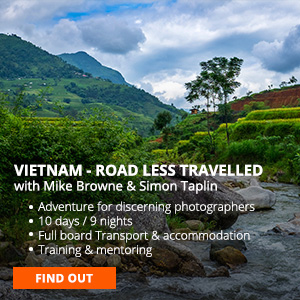Learn Photography Faster PT2
In How to Learn Photography Faster PT 1 we looked at why we don’t try things out. What it is that leads to laziness. There is so much photography to be learned simply by trying things to see what happens, but many of us want to be told or even have it done for us.
Which is a shame because trying something is like an experiment. Sometimes it works, sometimes it doesn't and just sometimes we get an image (or result) which surpasses our expectations. And when that happens we've truly learned something new for our photography.
So, now let's address those same questions from part one for real and I'll show you how easy it is to make some lovely new neural pathways in our Brilliant Brain - Which is by the way, my 1st Building Block of Photography.
What is the best Aperture to use?
That depends on how you want your image to look. Apertures are both an exposure control and a creative control too. You have to know what an aperture does, then ask yourself questions about what you want your image to look like. How much sharpness (Block 5) do you want?
Can I use my photo filters on my Camcorder?
That depends on which filters you have. Do they fit over the camcorder's lens or not?
What's the difference between sunny and cloudy white balance?
The colour of light is changing all the time but our eyes don't see it because our Brilliant Brains colour correct everything for us. Cameras don't have brains, so they have a white balance control instead. All you have to do is match it to the lighting situation. To see how much difference there is between them, just take the same photo twice. 1st with sunny preset then again with cloudy.
Which lens will give me the best results when I go out to shoot pictures?
That depends on what you want the pictures to look like, as well as the subject you're shooting. For example, if you're shooting wildlife or sports you'll need a long lens. Try shooting on a short lens and the action will be tiny in the image so you'll have to crop away most of those lovely megapixels you spent so much money on.
But more than that, different focal lengths can be used to create different looks in an image. So you have to begin with an idea of what you want then try different lenses / focal lengths to see what happens.
Can I shoot a portrait with a 50mm lens?
You can shoot a portrait with any length lens. But as with focal length, you have to ask yourself how you want the image to look. So all you can do is shoot some portraits with a 50mm lens to see if you like them.
What's the best shutter speed to use?
Like apertures, shutter speeds have a technical use to help control exposure, but they can also be used creatively to freeze or blur movement. The 'best' shutter speed is the one that gives you both the exposure you need and the movement effect (frozen or blurred) you want. So why not try some out and see what happens?
You will learn photography so much faster if you try stuff out by doing experiments just to see what happens. Whilst i'd love to implant knowledge and experience I've gained over 20+ years directly into your head, I can't.
And if I did, I'd be depriving everyone of the fun and sense of achievement gained from finding answers for yourself.











































